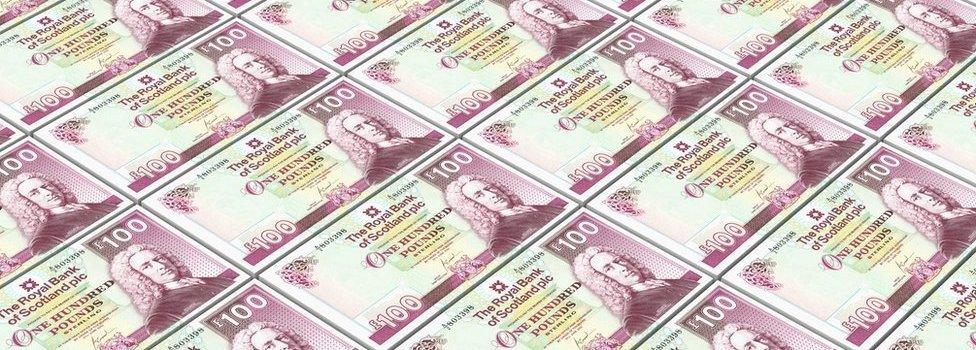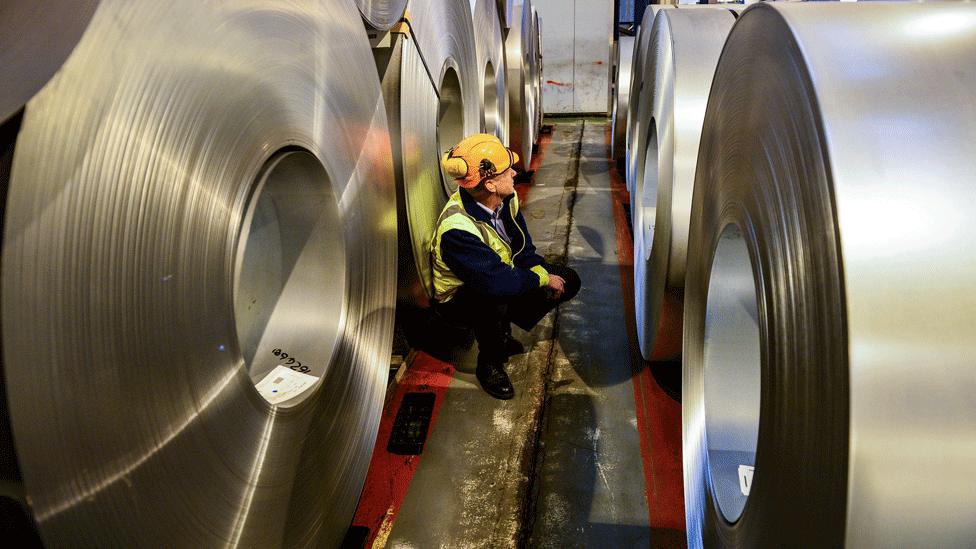Why are the Gers figures contested?
- Published

The latest Government Expenditure and Revenue Scotland (Gers) report has been published, estimating the difference between what Scotland brings in and what it spends. The figures, which show Scotland's public spending deficit was reduced to £13.3bn over the past year, have become a political battleground in recent years.

How did Gers come about and how have they been used?
Gers were first published in 1992 under the then UK Prime Minister John Major.
Conservative ministers in the Scottish Office thought it would help inform the debate on devolution, or at least it would help them make their case against a Scottish Parliament.
Oil prices were low at the time and they thought the numbers would show how much more Scotland gained from the Treasury than it sent south in tax revenues.
Even though the figures have been compiled by the Scottish government since devolution in 1999, there is still an annual battle to interpret the numbers.
The profitability of offshore oil and gas makes a big difference to Scottish public finances, with North Sea oil revenues falling from about £11bn in 2011-12 to virtually zero in the last set of figures.
Even though oil production has been growing recently, the government is raising very little in revenues.
At the time of the independence referendum in 2014, the Scottish government's White Paper described Gers as "the authoritative publication on Scotland's public finances".
However, the government has more recently warned that the figures are "notional" and only reflect Scotland's finances under current constitutional arrangements.

Does Gers tell us what an independent Scotland would look like?
No. The Gers figures are not meant to be anything other than a way of showing the current position under the present arrangements.
When last year's figures were published, BBC Scotland's political editor Brian Taylor asked: "What does today's report say about independence?
"Everything, says Scottish Secretary David Mundell. Nothing, says First Minister Nicola Sturgeon. Not much at all, suggest Scottish government officials, who note - as they have in the past - that it is an arithmetical analysis 'under different scenarios within the current constitutional framework'."
BBC Scotland's economics editor Douglas Fraser wrote: "One way of looking at them is to measure how big Scotland's deficit would be, if the country were to have been both independent and if its public finances were performing exactly as they did within the UK.
"It would probably perform rather differently if Holyrood pulled the tax, spending and borrowing levers in different ways to the Treasury in London.
"It could have pulled those levers in a smarter way, or left a bigger deficit.
"Everything around this is contested. But what can be said is that this helps illustrate the health or weakness of Scottish public finances."

Is Gers based on real data?
The University of Strathclyde's Fraser of Allander Institute has tried to explain how GERS is compiled, external.
It points out that data on the spending side of the equation is not estimated but some UK spending is allocated to Scotland on a proportional basis.
The total spend is made up of Scottish and local government services, UK welfare spending and pensions in Scotland, and UK government (non-devolved) spend in Scotland.
This is spending on matters such as defence and debt interest, which is apportioned to Scotland.
For revenues, there have been complaints that the data used is not collected for Scotland and has to be estimated from UK figures.
In recent years, this has been less the case with the council tax, business rates, the profits made by Scottish Water, landfill tax, land and building transactions tax and local authority user charges and fees included.
One big difficulty has been identifying Scottish income taxpayers, but the introduction of a separate Scottish tax code should make this more accurate in future.
There are other revenues - particularly those collected by HMRC - where estimation is needed.
The Fraser of Allander Institute says "estimates are not unusual in economic statistics".

How does Scotland compare to the rest of the UK?
One of the problems with the figures is that there are no other official regional breakdowns to compare to Scotland's, so the comparison has to be made to the UK as a whole.
In the latest set of figures, Scotland's tax take was about £312 per person less than the UK figure.
However, only London, the South East of England and the East of England are thought to raise more per head than Scotland, according to previous estimates by the ONS.
Spending for Scotland is higher than for the UK - a difference of about £1,400 per head in 2016/17.
It has long been the case that Scotland has received more to deliver services such as health, education and economic development because of the geographical challenges it faces in these areas.
Scotland also has a slightly higher number of people entitled to benefits associated with issues such as long-term ill health.
- Published23 August 2017
